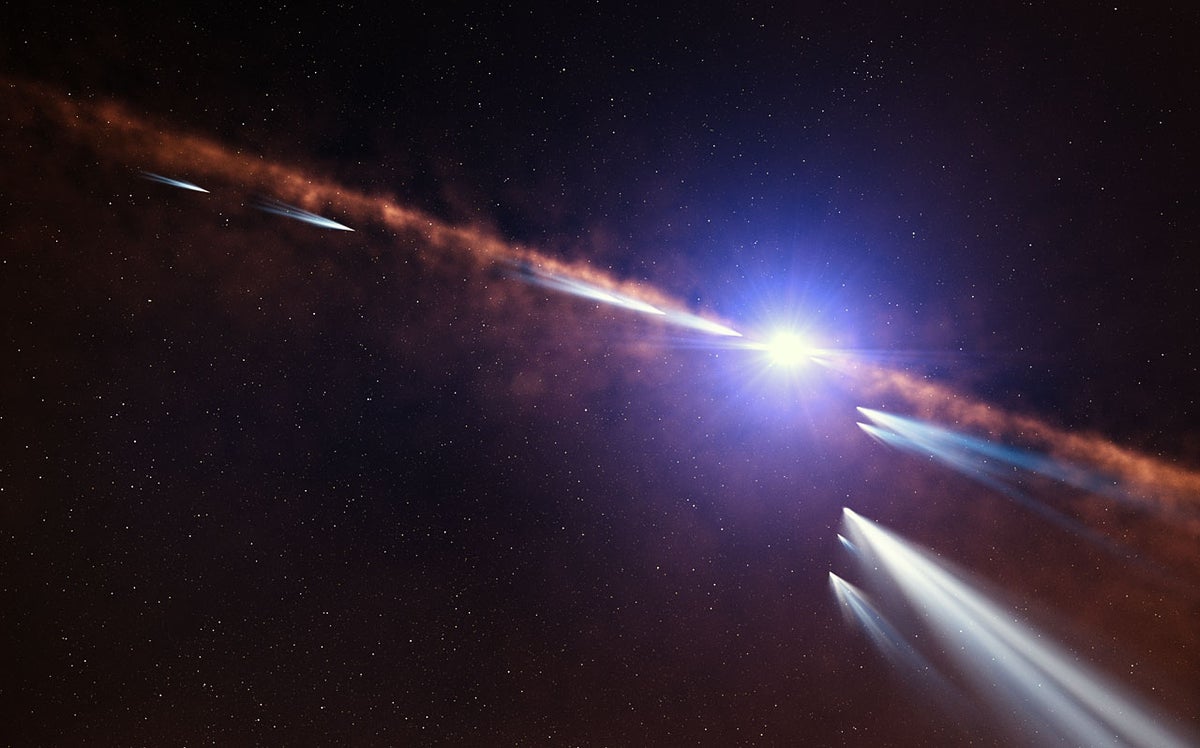
"But as they near our star on their orbit, they warm up. The ice thaws and turns directly to gas, which expands around a comet's solid nucleus as a fuzzy head and, sometimes, as a long, spectacular tail. Some of these comets can get bright enough for us to see without optical aid, but the vast majority of them never become very conspicuous."
"Given that we now know that planets are the norm around other stars, too, it's not a big leap to think those stars might host comets as well. The sun sits in the center of a vast collection of small cometary bodies, which may number as many as a trillion. If that's the case for other stars, might we be able to detect them? This may seem hopeless at first blush; the next nearest star is 10,000 times farther away than Neptune,"
"And yet, incredibly, we know of dozens of stars that sport exocometary companions! And just as astonishing, the first such alien comets were detected nearly 40 years ago. Beta Pictoris is a young star located a little more than 60 light-years from the sun. In the early 1980s, infrared observations revealed a warm glow around the star that proved to be from an accompanying large debris disk left over from planet formation; indeed, two worlds have since been confirmed to orbi"
Comets are icy bodies that remain frozen in the outer solar system but warm as they approach the sun, causing ice to sublimate into gas that forms a fuzzy head and sometimes a long tail. Most comets remain faint beyond Neptune and require large telescopes because they reflect little sunlight. The sun may be surrounded by a trillion cometary bodies. Given that planets are common around other stars, other stars can host comets too, but detecting them is challenging because even the nearest stars lie thousands of times farther than Neptune. Infrared observations of Beta Pictoris revealed a debris disk and confirmed exocometary activity.
Read at www.scientificamerican.com
Unable to calculate read time
Collection
[
|
...
]